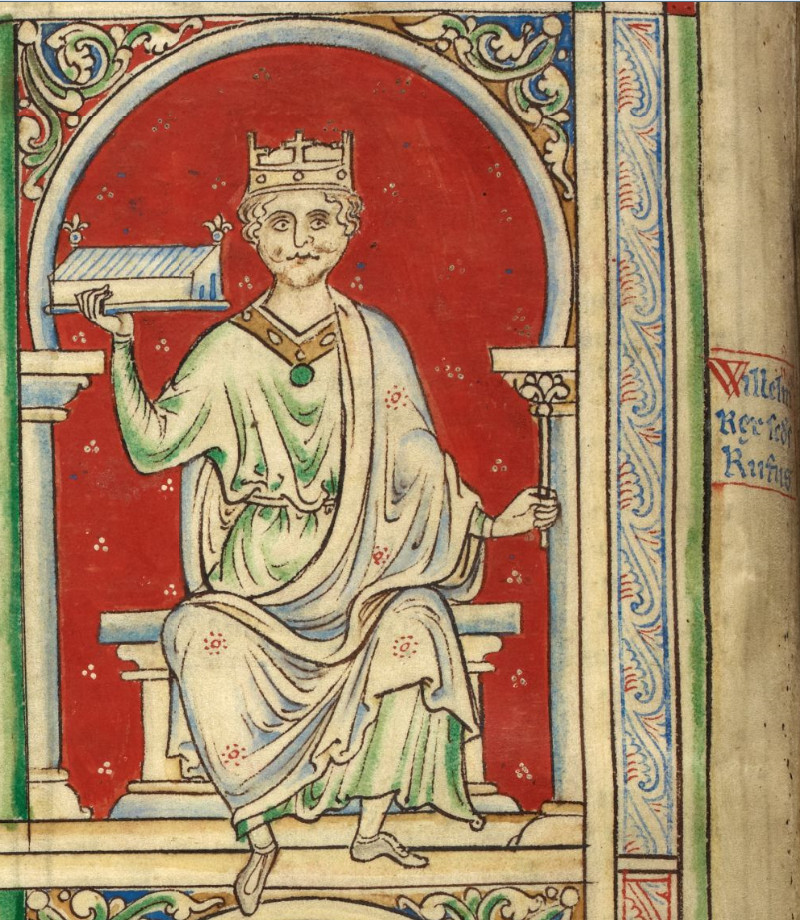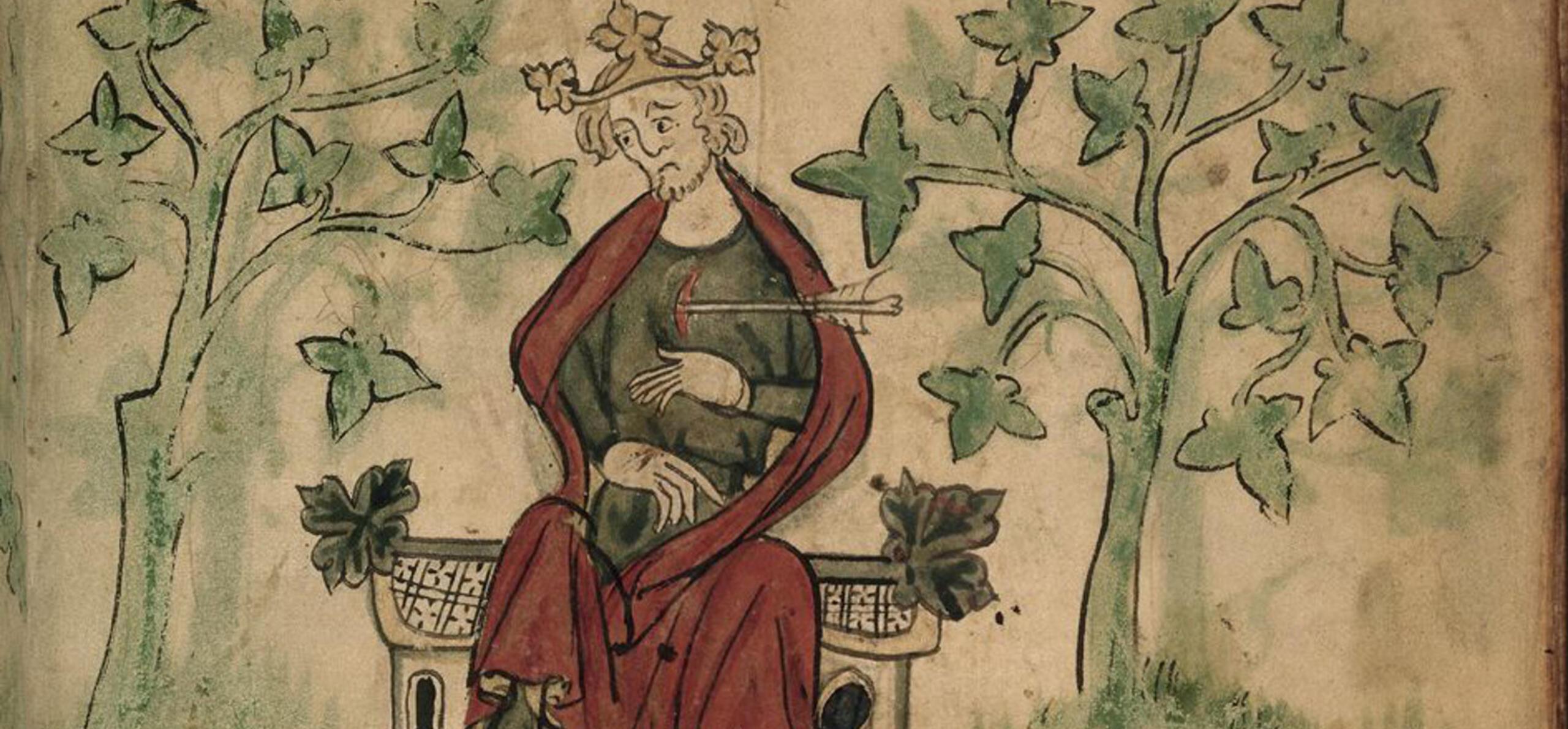On this day 917 years ago, King William II of England died. William II is perhaps better known as William Rufus, though in reality is not known by many. He was the third son of William the Conqueror and older brother of Henry I. William the Conqueror is one of the most famous figures in English history. His successful invasion of England is recorded in detail on the Bayeux Tapestry. You can see a full-scale replica here at Reading Museum. Henry I is also better known than his brother, especially in Reading. Henry I founded Reading Abbey and was later buried here, changing the fortunes of our town forever. It was the circumstances around the death of William II that led to the quick accession of King Henry I.
William died from an arrow to the chest. The details of his demise are recorded by the contemporary chronicler William of Malmesbury. He wrote his account The History of the English Kings around twenty years after the death of the king.
Malmesbury does not show much sympathy for the king. He seems to suggest that William had it coming. Rufus is thought to have been lacking in morality and piety. He over-indulged, particularly in lust and alcohol. Chroniclers were often churchmen and therefore did not judge William favourably. Malmesbury complains about the king’s lack of respect for God and highlights all of the bad omens leading up to his death. Malmesbury reports that in the year of the king’s death the Devil appeared to men in the woods, and in the village of Hampstead in Berkshire the spring ran blood for over two weeks. The king supposedly just laughed when he heard this.
Yet when the prophecies came to William himself, he took it more seriously. The phrase ‘too little too late’ comes to mind. The king dreamt that as he was being bled, a spurt of blood shot into the sky, obscuring the sun and sending the day into darkness. When he woke he refused to sleep in the dark and ordered his servants to watch over him.
That same night, another ominous dream came to a monk. Malmesbury paints quite a villainous image of the king and says how he came ‘into a church, looking scornfully round the congregation with his usual haughty and insolent air’. He proceeded to then seize the crucifix and gnaw away at the figure’s arms and legs! The figure fought back and kicked the king away who fell back as flames erupted from his mouth, an appropriate way for Malmesbury to highlight the king’s devilish beliefs.
The king soothed his troubled mind by feasting and drinking. He then left with some companions on his fateful trip into the New Forest. Coincidentally his elder brother Richard had also died in a hunting accident in the New Forest almost thirty years before.
The group scattered as they headed further into the forest. The king was left with Walter Tirel. The king soon took aim at a stag though only managed to wound the animal. As William watched it run he had to shield his eyes from sun. At this very moment Tirel shot at another stag. Malmesbury writes that ‘Unknowingly and without power to prevent it he sent his fatal arrow through the king’s breast.’ The king silently broke off the protruding arrow before falling onto his wound, hastening his death.
Tirel rushed to his aid. When he discovered that the king was dead he quickly fled the scene. The rest of the party did not pursue him. Some pitied him, some accused him. Their thoughts soon turned from their fallen king to his predecessor. The king’s corpse was left by his companions and was picked up by some locals who transported it to Winchester Cathedral.
His death has been much debated. Was it an accident or was Tirel an assassin working for Henry I? With their eldest brother out of the country, William Rufus’ quick death created the perfect opportunity for Henry to seize the throne.
Henry I was crowned king of England on 5 August 1100. Don’t forget to check our blog on the day to find out more!

William Rufus holding Westminster Hall.
Bibliography
William of Malmesbury, Gesta Regum Anglorum, I, ed. and trans. R. A. B. Mynors, R. M. Thomson and M. Winterbottom (Oxford, 1998).
Images
Header: Royal MS 20 A II, f. 6r, British Library. View the manuscript online.
In text: Royal MS 14 C VII, f. 8v, British Library. View the manuscript online.





